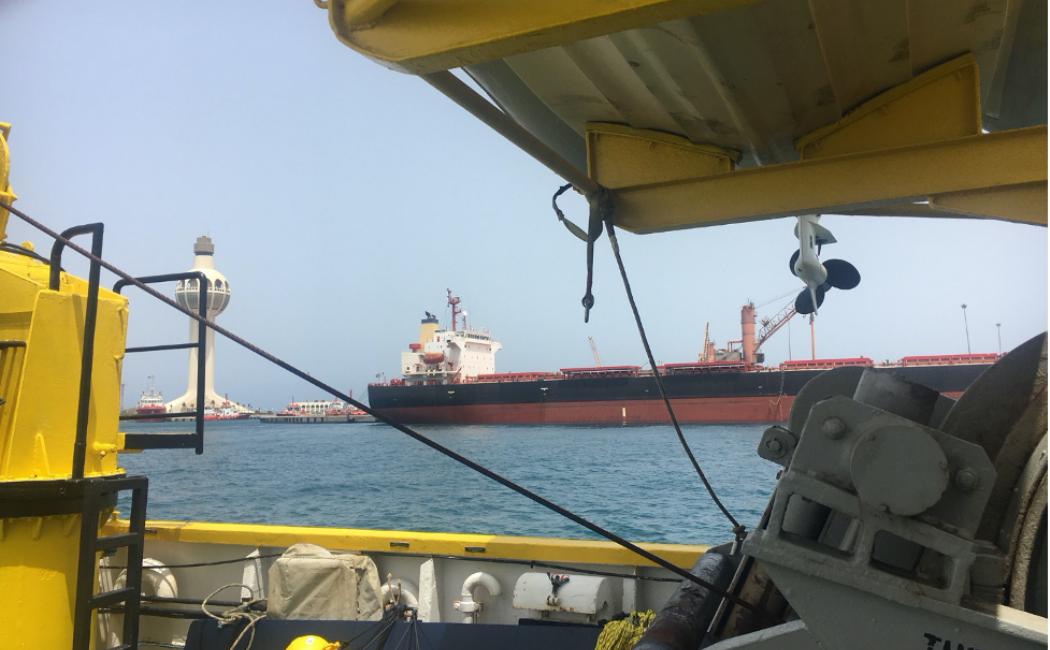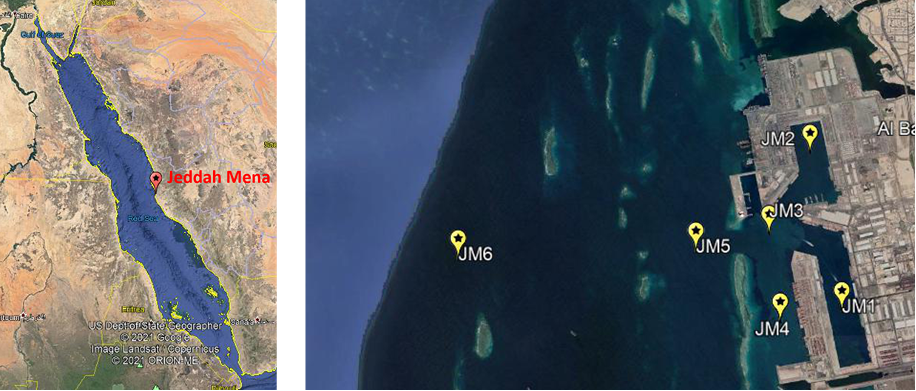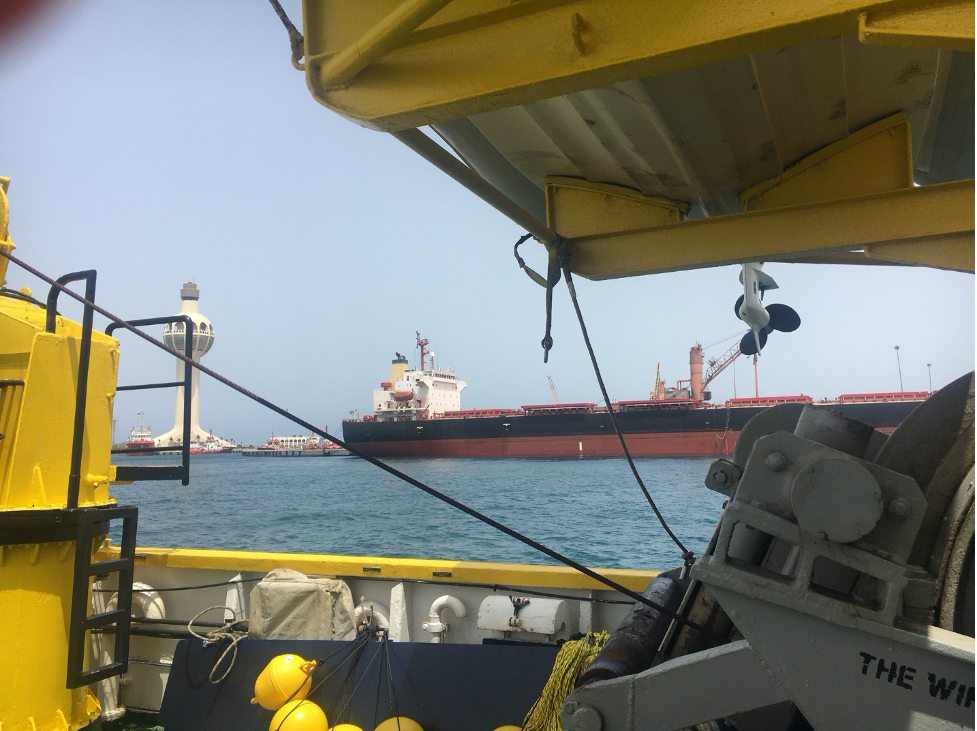


Fifteen hours of cruising, through both rough and moderate seas, brought us to Jeddah at
about 9 this morning. From the bridge, the city took on the appearance of a ghost town rising from the mist.

Jeddah, as seen in the morning mist while approaching the Mena.
The first area of work was the Jeddah Mena. As with the King Fahd Port in Yanbu, the aim of our survey in the Mena was to resolve, as well as possible, the environmental contaminants associated with the port operations at Mena. Towards that end, we acquired water and sediment samples (as well as CTD and velocity profiles) at a number of stations distributed throughout the port area and in the water offshore.

Location of the Jeddah Mena and the sampling sites in and close to the Mena.
The giant cranes and vessels of the Mena, in very close proximity to our stations, made for a dramatic, and somewhat unsettling backdrop. Nevertheless, the work on deck went smoothly, with the NCEC contingent making a significant contribution.

View of the Jeddah Mena from the back deck of the Aegaeo.

Hammad Al-Sulami of NCEC working on a box-core sediment sample taken just outside the Jeddah Mena.
The next area of call was the terminus of the discharge pipe from the Al Khumra wastewater treatment facility (Jeddah’s largest). We managed to capture the signal from the outfall in the first CTD cast. The signal took the form of a low-salinity layer (the wastewater discharge is fresh compared with the receiving Red Sea water) at about 20 m depth. Salinity data from subsequent CTD cast revealed that the signal of the wastewater plume was relatively small in extent, reaching no more than a km from the ‘diffusers’ at the end of the discharge pipe.
Ending this long, but productive day, was steam to the Obhur Creek (referred to as ‘The Creek’ by Jeddah residents) to deliver samples to our partner-in-analysis, ALS Arabia.
Leave a Reply
Your email address will not be published. Required fields are marked *